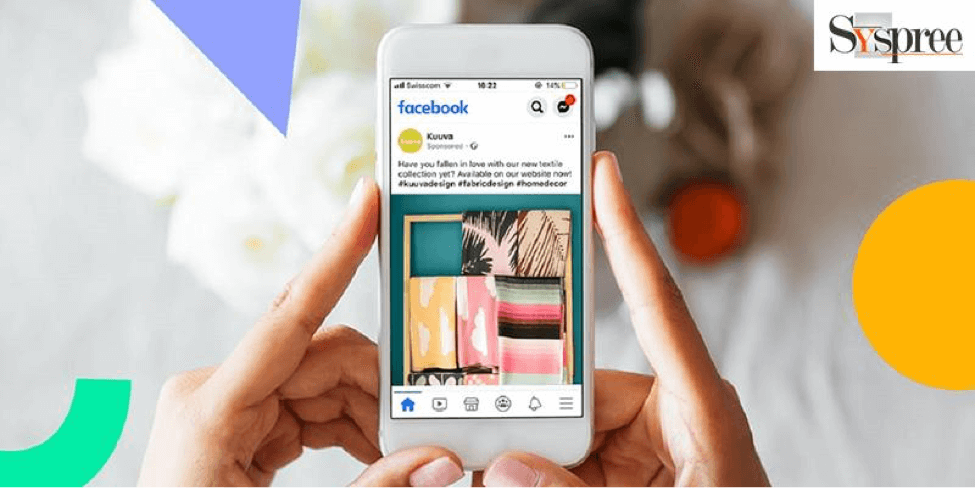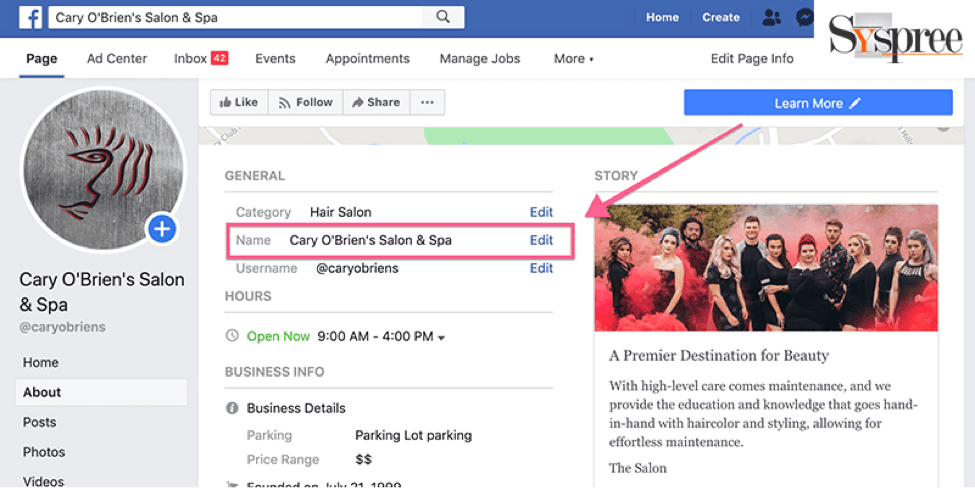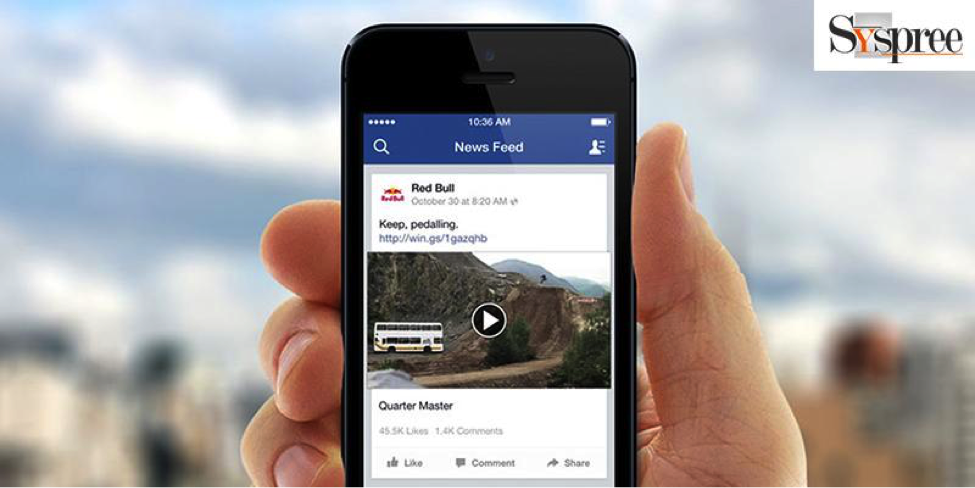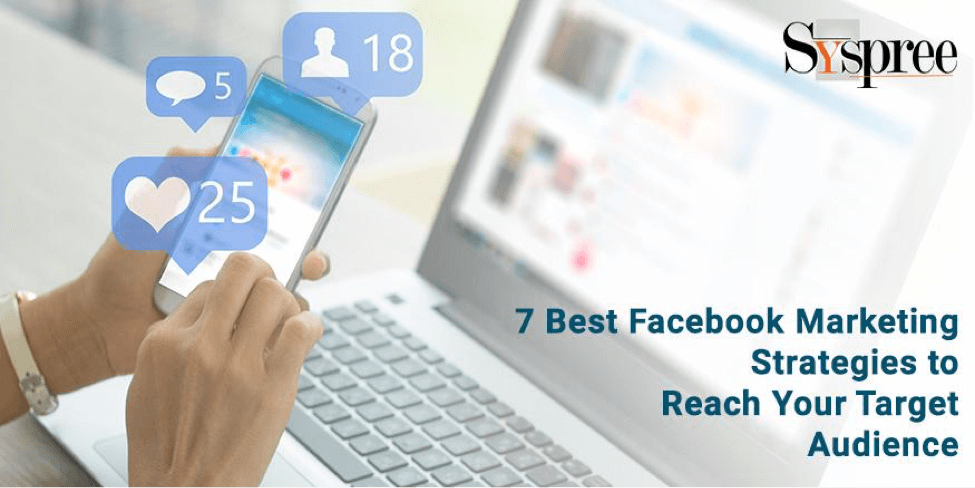Facebook marketing isn’t a choice. Facebook is among the top popular social network around the globe, pulling around 2.29 billion daily active users. It’s not just about vacation photos or humble brags too.
For 53.2 percent of Internet users between the ages of 16-24 Facebook is their main source of research on brands. In addition, 66% of Facebook users visit the local business page a minimum of once per week. Truth: You have to have a profile on Facebook.
But what do you need to do first? Do you have to advertise? What topic should you write about? Is creating a company Page indicate that you’re part of the metaverse?
All the answers to your questions are shared by the Social Media Marketing Company in Mumbai along with a step-by-step guide to getting your Facebook marketing campaign on the right track.
So let’s get started.
What exactly is Facebook Marketing?
Facebook marketing refers to the act of promoting your business or branding on Facebook. It helps businesses increase the brand’s reputation, increase their online presence, generate leads, and increase sales of products or services.
Facebook marketing strategies can comprise:
- Organic text, photos, or video content
- Paid and “boosted,” text, video, or photo content
- Facebook Stories and Reels
- Facebook ads
- Facebook Groups
- Giveaways and contests
- Facebook Messenger chatbots or auto-responders
- Marketing Influencer campaigns
How do you set up Facebook for business?
For those with an unsustainable or low spending budget: you are able to perform Facebook marketing for absolutely free.
The social media marketing agency suggests that one can choose to use sponsored services like Facebook advertisements, boosted content, or influencer/partnership campaigns to hasten growth.
Let’s begin at the beginning: Your Company is a Facebook page. If you just do this and share content that is organic or follow the advice that is in the article below, you must create a Page.
Create a Facebook Business Page
- Log into Facebook with your personal Facebook account. Your personal details won’t be displayed on your Page however, you can also create a brand new Facebook account using a company email address if you’d prefer.
- Go to Menu (the nine dots on the right) Click Create and then Page.
- To start your Page, you must enter:
- Name: your Company’s name
- Category: Type in the search box to find the choices available. For instance, “retail” or “restaurant.”
- Description: A paragraph or two that describes what your company does. Later, you can change this.
- Congrats! Your page is now live. Select Edit Page Info to add additional information to your about section, include an URL for your website, and more. I’ll go over the specifics of optimizing your new Page in the next article.
Verify your account by Facebook (optional)
It does help, even though you don’t actually need it. What is the best way to get the little blue checkmark that’s reminiscent of the top brands?
Verified Pages are pages that Facebook has verified to prove that the brand or individual is who they claim to be. It demonstrates the trust of users (which is vital because 70% of users claim to be skeptical of Facebook).
The process of getting verified on the technical side is just as easy as taking a form. However, in reality, Facebook only verifies the profiles and Pages of businesses or public figures with a good reputation.
It’s not easy to get your personal information confirmed, but it’s simple for companies that are of any size, specifically those with an office. It is crucial to ensure that the links to prove your identity are genuine, non-promotional content that comes from reliable sources.
Create a Facebook ads account (optional)
It’s a good idea to create an account on Facebook advertisements account even if there’s no intention to use it immediately.
After you have your business page set up then go on to Facebook’s Ads Manager (now an element of Meta Business Suite). You can either add to an account that is already in place on your Facebook accounts account or follow the steps to create a new account.
Now you can begin your automated campaigns, design the campaign of your dreams or even promote (“boost”) already existing Page content.
The digital marketing company in Mumbai will help you to create Facebook ads and along with running ads on Facebook.
Create an effective Facebook advertising strategy.

Create an effective Facebook Marketing Strategy
1. Define your audience
Before doing anything, it is essential to determine who your ideal customer is, and what they would like to see on Facebook. Next, you must create an advertising and content-related strategy on top of this. Every single article about social media marketing mentions this…Because it’s true. At a minimum, you must identify your audience by answering these questions:
- What age bracket do they fall within?
- Where are they located?
- What kind of jobs or duties do they hold? (Most relevant to B2B companies.)
- What issue do they have with your industry/product? (And what’s your solution?)
- What are the times and places they when do they Facebook? (At home, work, or limit scrolling at night?)
Are you unsure where to begin? You already have fans on your Facebook page Check out the Audience Insights within Meta Business Suite to see the demographics of your current fans. Meta’s Insights area provides more than the basics such as:
- Education attainment
- Status of the relationship
- Location
- Hobbies and interests
- Languages used
- The usage of Facebook statistics
- Purchase activity from the past
Do your records match up with the clients you wish to draw? Excellent continue the good work. Are you not? Change your content strategy accordingly and check your Insights data to determine what is effective in changing your audience towards what you’d like to do. The data can also be useful to target ads when you are looking to study Facebook advertising.
2. Determine your objectives
Why would you like to have followers? What do you expect them to do? Most businesses simply say, “Buy something.” However, it’s not all about money. Some of the goals common to Facebook pages include:
- Increase brand recognition
- Improve customer service
- Keep an image of your brand that is consistent across all social media platforms
- Traffic is brought to physical locations
It is important to know that your Facebook advertising goals be contingent on the overall marketing plan you have in place. (Need an update? We’ve come up with a no-cost marketing planning template for you).
If you’re looking for more straightforward advice read this article on the importance of setting goals for social media and the best way to measure the results.
3. Plan your content strategy
Do not overcomplicate this. Your content strategy is:
- What will you publish
- When will you post it?
What should I post?
Will you post behind-the-scenes pictures of your work? Are you going to share exclusive deals? Do you only focus on the business model, or will you add games and fun?
Let your imagination be ablaze with thoughts–Ha! Just kidding. You’re going to publish what your readers want, isn’t it? After all the research you’ve done in the first step is that right?
It is encouraged to be creative, however. Combine the information you have about your intended audience with the things you believe will perform effectively. (Psst–we’ve looked up the most effective trends in social media to make sure you do not have to.)
Consider your Facebook strategy for content as a bucket. Each bucket is a particular topic. For instance:
- Industry news
- News from the company
- Wednesday Tips is a time to give an instructional video to your program
- Reviews/testimonials
- Promotions and new products
You’ve got the idea. And what is it that makes everything, even creativity, more enjoyable? Rules! A few of the most well-known social media guidelines for a content strategy to take into consideration:
- It is the Rule of Thirds A third of your content consists of your thoughts or stories, a third is a direct interaction with your audience and the final 3rd is your promotional content.
- The 80/20 rule is that 80percent of your content must inform, entertain, and teach, and the other 20% of your content can be used for promotion.
When do you post it?
Once you’ve determined what you want to write about, choosing when to make it available is the final piece of the puzzle.
As previously mentioned, Facebook Audience Insights can aid in this, however, our research has revealed that the most effective times to post on Facebook is between 8:00 AM and 12:00 PM on Tuesdays and Thursdays.
But not so quick. This is a huge generalization. As with every other aspect of your plan try it out! Test different times and determine which ones get the highest engagement.
It’s simple to keep track of your goals using a good planner. Before you experience an “oh crap, I need a post right now” content emergency, your team can work on draughts, see impending posts, and fill in any gaps.
4. Optimize your page

Optimize your page
If you’ve just created the Facebook business page or have been using it for a while, be sure that you’re using:
- A profile photo with your logo is excellent as you can also use it as a cover image. (Check our image size for the social media guide to see the latest specifications.)
- A call-to-action button like Book Now.
- Contact information, such as the URL, number of phones, as well as an email address.
- A comprehensive section about.
- Pin a post that contains your latest offer, promotion, or FAQ.
- A customized Page URL. (For example www.facebook.com/example)
- A precise business sector. (our business is an “Internet company.”)
If you’ve got an office in a physical location make sure you’ve also added an address on the street.
5. Check out other tools on Facebook.
● Create a Facebook Group
Groups require plenty of attention and moderation to be successful, however, they can produce impressive results.
● Check out Facebook Marketplace for local sales
While you may see Marketplace as a newer version of Craigslist, however, it’s actually an effective commercial sales channel too.
The 2022 year will see Facebook Marketplace ads reach the potential of 562.1 million users. Most sellers are clearing out the basements of their homes, commercial listings can be highly recommended and are especially popular in areas like residential sales (where the local laws permit).
It’s easy to make listings, so it’s an ideal option for local business. If you’re selling nationally you should consider advertising your shop’s site, too.
6. Install Meta Pixel (formerly Facebook Pixel)
Install Meta Pixel (formerly Facebook Pixel)
Meta Pixel is a tiny bit of code that is installed on your site to permit tracking as well as testing, targeting along with analytics and tracking for Facebook and Instagram advertisements. You can only install it once for each website.
- Log in to Facebook Events Manager. From the left menu, you can click Connect data sources.
- Select Web as the data source, and then click Connect.
- Name it and then enter your website’s URL. Based on the platform your website is on, you may have an integration that is one click. If you don’t, follow the instructions for how to apply the plugin manually.
- Create the events you wish to monitor. In the Overview tab of your Pixel Select Add Events then from the Pixel.
- Enter your URL and then click open your web page. You’ll be able to select the appropriate buttons for your site to monitor events by using your Pixel. No coding is required. Each button should be assigned a purpose, for example, “Purchase,” “Contact,” “Search,” and more. Check that your browser is able to display pop-ups in order for this to function correctly.
7. Try Facebook ads
Facebook ads can increase sales and traffic, but starting a campaign can be difficult. You may also be wondering what advertisements on Facebook cost. (Spoiler it’s different. You’re welcome.)
Facebook’s ads have the biggest possible audience of any social media platform, reaching as high as 2.11 billion users in 2022. That’s 34.1 percent of the planet’s people over 13 years old.
When should you begin using Facebook ads?
The day after you’ve created your new and shiny company page isn’t the ideal moment to experiment with Facebook advertisements. However, letting someone else determine when you’re ready isn’t the best option, either. Heh.
As per the digital advertising agency Singapore, with all marketing activities, there’s not any one right answer or KPI that will tell you when you should start testing advertisements.
I’d say you should consider these items first:
- At least 100 likes on the Page (followers)
- Meta Pixel set up
- Clear Facebook marketing goals
- At minimum 20 pages of the post (ideally more)
- Many creative options for each advertisement
- The following is a Testing A/B strategy
The easiest way to boost an article
“Boosting” a post is Facebook the term used to describe using a normal Page post and making it into an advertisement.
The Boosting ad is the one that senior content marketers advised you of. Effects of the success of this strategy include increased conversion rates or audience growth and a new appreciation for digital advertising.
The best time to consider this: If you’re unfamiliar with Facebook advertising and would like to try it out. Boosted posts can be relatively inexpensive as you can set the budget upfront. Don’t forget: Cheap won’t work in the event that the advertising isn’t focused.
Start a Facebook advertising campaign.
Groups of ads, innovative choices, date of launch, awareness advertisements conversion ads, several formats, and copy alternatives… The process of creating a complete Facebook advertisement campaign takes quite a bit of work.
This is certainly worth it. Combining paid and organic content on Facebook can be the key ingredient to achieving all your social media ambitions.
If you are considering it: You’re trying to generate a focused momentum for a launch of a new product or another promotion.
Paid advertising campaigns work well with budgets of any size However, you must first master your skills in targeting. The practice of boosting posts can aid in determining the best strategy for you.
You’ve seen an advertisement and you consider, wow, I’m definitely the right target audience! For instance, I learned that A&W offers kid-sized meals for 5:30 pm on a scorching summer Sunday. I’m sure my soul is going to go away in the event that I put the oven on.
That’s the way you want the viewers of your advertisement to be feeling: “This is for me.”
You might consider using an agency or a freelance consultant to assist you to create your initial campaign. You’ll gain a lot of knowledge and increase your odds of being successful.
8 Facebook post types to utilize for advertising
1. Text
Plain Jane. No hype and all types. The OG.
Text posts don’t contain links, which means they’re not intended to increase traffic, however, they are surprisingly effective in increasing the reach of your Page. Text posts are the ones with the most engagement rate of 0.13 percent.
But, they can easily be missed by the algorithms. If you are writing text that is less than 130 characters, it is possible to select a vibrant background to make them make an impression.
Keep posts to a minimum and concise. You can quickly communicate something to your readers, or ask them questions. You can also be super humorous and relatable.
2. Photo
Photo posts are second to text posts in terms of engagement, and have the typical level of participation of 0.11 percent. A photo post could be any kind of image, which includes photos, infographics, or any other type of artwork. You can include any number of photos you like in your posts however if you want to add more than 10, think about making an album.
Any business type can benefit from powerful photo posts:
- Display your latest creations or show the process of creating your own products.
- Invite your guests to your workplace or to your workshop.
- Impress them with your data visualizations to prove you’re point.
It’s even better to include photos of your customers to give them a different perspective on your product and to draw attention to your brand’s audience.
3. Video

Facebook Video
Video is the only way to communicate that it can’t do anything else. It’s the closest option to having your audience in your face.
Need ideas? Here are some kinds of videos you can share:
- Explainer videos
- Demo videos
- Interviews with expert industry professionals or even your team members
- Behind-the-scenes sneak peeks
- Coverage of the event
- Informally, or as a formal commercial shoot
- Webinar recordings
MojoGrip is the go-to source for aviation enthusiasts. They know that their customers are just as enthusiastic about planes as they do, and that’s why the “How It’s Made” video was a huge hit.
4. Live video
Live video is about keeping your viewers’ interest.
Q&As are among the most efficient live video formats used by B2B businesses. In both B2B as well as B2C consider experimenting with demonstration videos that demonstrate how you can utilize your product, especially to demonstrate lesser-known usage instances as well as “hacks.”
Lenovo was able to connect with its viewers and demonstrate the new capabilities of its product by using this Live. The viewers voted on the best ways to attempt to damage the laptop, and Lenovo performed them live to demonstrate the laptop’s durability.
5. Links
Links refer to anything that points toward an outside source like your site. Links posts can include any media type, too.
Making one is simple It’s as simple as the caption you want to add to paste into any URL and Facebook will fetch an image, and title along with a description of the meta on its website. You can manually add your own as well.
6. Facebook Stories
On a daily basis, millions of Stories are shared on Facebook, Instagram, Messenger, and WhatsApp–Meta’s entire collection of apps.
Facebook Stories offer a familiar vertical layout and choices for adding stickers, links texts, stickers, and more. It is possible to add either videos or images. Images display for five seconds while videos can last up to 20 minutes per Story. Stories are deleted within 24 hours.
You can create organic Stories or create Facebook Stories advertisements. To get the best results, keep the text and images simple and use all the available space for letting your picture or video speak for itself.
7. Pinned this post
It is possible to set an already-published blog post that you have on your Facebook Page to be a “pinned post,” which means that it will remain on top of your page.
This can be useful for an invitation message or links to pages or contact details for customer support or whatever you’re advertising at the moment. You can alter your pinned posts at any time.
McDonald‘s regularly changes their menu to promote new deals, such as this one that encourages app downloads.
8. Specialty types of post
They are excellent for certain situations, but you’ll need them less often.
Facebook Group posts
The process of creating a members-only Facebook Group in addition to your business page is a lot of work. However, should creating communities is among your objectives then creating a Facebook Group is a perfect method to accomplish that because of the 1.8 billion active monthly users.
Posting to a Group is like posting on your Page but it’s only accessible to members. Are you certain it’s the best decision? We’ve got step-by-step directions, along with suggested settings for creating a Facebook Group for business.
Hello, Fresh runs their #FreshFam Group where customers can share images and feedback on the dishes they’ve created. It’s connected to their Business Page on the Community tab.
Fundraisers
Fundraising through Facebook to benefit a charity or for your foundation is a great method to increase the number of people who follow your page while making an impact.
Fundraisers reflect your beliefs and bring people closer to the mission of your brand. They put you in the position of putting your money on display. Plus points: may choose to match any donation (up to a maximum amount you choose).
Also, make your latest fundraiser your Pinterest post to get the most views. However just confirmed Facebook business pages for brands, public figures or organizations are able to create fundraising events.
There’s a solution in case you’re not yet verified. Make a fundraiser on your personal Facebook account, and then upload it to your business Page.
Events
Making an event page provides 6 distinct advantages:
- It’s in a different section on the Page (“Events”).
- It’s featured in Facebook’s Events section, which means that people will see your page even in the absence of a follow or like your company’s Page. More than 35 million users make use of Facebook to search for events close to their homes every day.
- The public is able to RSVP to attend in-person as well as online-based events which means you can make plans for your attendance.
- If someone hasn’t decided to RSVP at this point, they can select “Interested” and Facebook will remind them when they are closer to the time of the event.
- You can make Facebook advertisements for Events to get more views.
- There are many hosts that you can host and it’s visible on all hosts’ pages. It’s also simple to collaborate with influencers or partners to advertise it.
Conclusion:
If your target audience is using Facebook it is time to seriously consider Facebook marketing to promote your business. Use these 7 strategies for your Facebook marketing to achieve your target audience. Now if you like this blog check out our previous blog 4 ways a brand ambassador program can help you grow your business.








Great stuff! Keep posting strategies like this.
This is an impressive article with quality content. very well-explained about Facebook’s marketing strategy. thank you for explaining this in a simple way.
Hello Yash. Thank you for your kind words
Thank you for sharing this detailed article on types of Facebook posts and Facebook marketing strategies to reach the target audience. It’s very helpful.
Hello Vijaya. Thank you for your kind words
Very Informative and amazing article! The article really helps to understand about facebook marketing, Facebook ads. Keep posting!
Glad to know the blog was helpful. Do check out our recent blog
The article’s content was insightful, well-structured, and filled with practical tips and strategies that can be easily implemented. I particularly appreciated the emphasis on targeting the right audience, engaging with users through interactive content, and harnessing the potential of Facebook groups. The inclusion of real-life case studies added credibility and showcased the effectiveness of the strategies discussed. Overall, this article not only provided valuable information but also sparked my creativity and inspired me to explore new avenues for promoting my business on Facebook. Kudos to syspree.com for delivering such an exceptional resource!
We are pleased to know you found the blog useful. Thank you for your kind words. Do check out our recent blogs to know more.